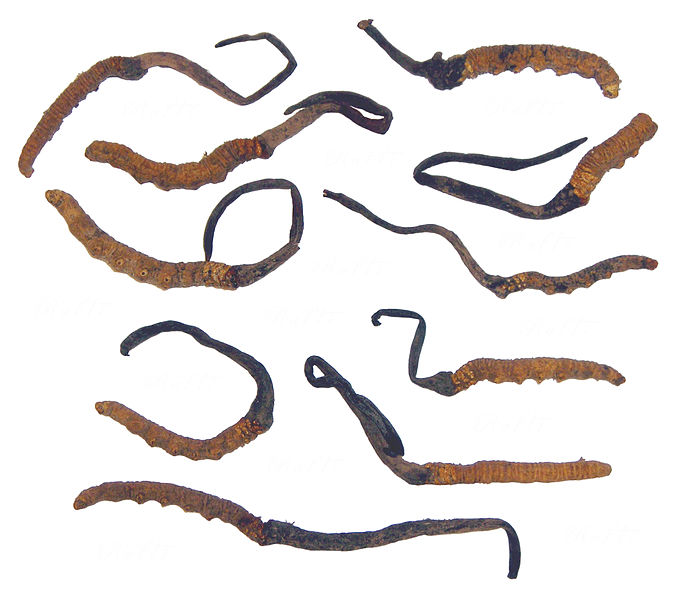There's an interesting news article in Science, entitled Last Stand for the Body Snatcher of the Himalayas?, concerning a fungus with quite unusual habits. The full citation can be found at the end of this article.
Cordyceps sinensis is a pretty strange fungus - it infects ghost moth caterpillars, and in doing so alters their behaviour such that when they hibernate for the winter, they orient themselves on end and near to the surface. Over the winter, the fungus consumes the caterpillar and eventually pushes a fruiting body above ground. In the picture below, you can see remnants of the caterpillar, from which the brown 'mushroom' protrudes (picture from wikipedia).

Unfortunately for this bizarre and interesting fungus, Chinese medicine believes it has aphrodisiac properties, and event that it can aid athletic performance. This has increased the demand for the fungus to such an extent that not only is it fast disappearing in the wild, but its habitat is damaged by people hunting for the fungus - it's quite difficult to spot, as you can imagine from the picture above.
Britain has its very own caterpillar consuming fungus: Cordyceps militaris (pictured below) - the very last species described in Roger Phillips' excellent book of British mushrooms. More information can be found at this web page (from where the image below is sourced)
The image shows the spore-bearing structures protruding from the substrate - the remains of the insect cannot be seen. This species is a bit more colourful than C. sinensis. Unfortunately, I've never seen one of these while out mushroom-collecting (but then, I'm usually looking for bigger, edible, mushrooms!).
